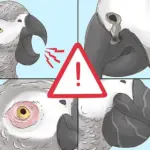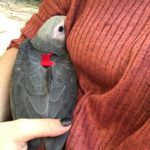
African Greys have a reasonably consistent activity level on a commonplace. Healthy Signs of an African Grey Parrot There tend to be times throughout the day for enjoying, talking, napping, and heart.
Healthy Signs of an African Grey
Appearance:
- Eyes – Clear, bright eyes no discharge)
- Beak – sleek beak
- Posture – Standing erect on perch
- Body – freed from lumps and bumps
- Respiration -sleek and even
- Nares – Dry, clean, open nares
- Feathers – so as, smooth, bright while not color breaks, transparency or ragged edges
- Feet – sleek and soft, not flaking, even reptilian pattern on the feet
- BM poop -damp, and contains dark inexperienced or brown stool with white or off-white pee.
- Nails – Of applicable length
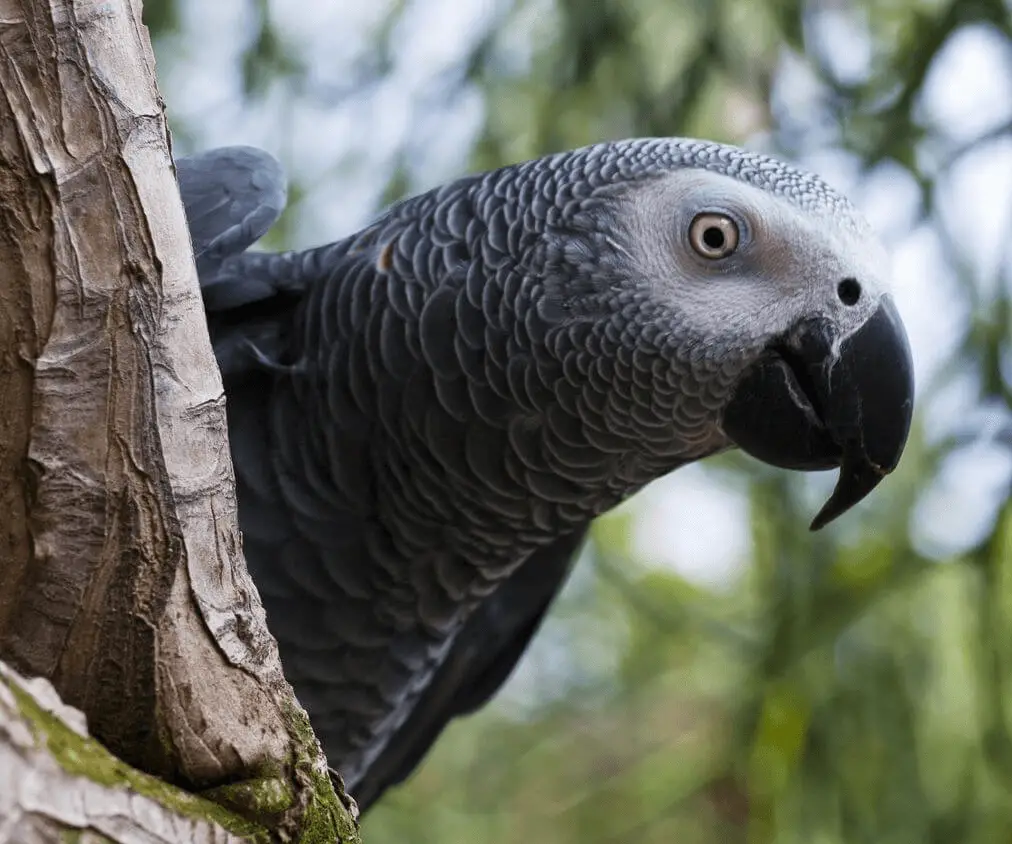
Signs of a happy African grey
The gray parrot of Gabon
A. His scientific name:
Psittacus Erithacus Erithacus.
Order, and Family:
It is part of the order Psittaciformes and the family Psittacidae.
The African Gray Parrot and Subspecies:
There are three subspecies in the African Gray parrot, including:
-The Timmeh Parrot: Living further north: Senegal, Gambia, Guinea, Sierra Leone, Liberia and Ivory Coast. It is smaller, darker, the plumage of its tail is dark red, see brown. The upper mandible of the bill is pinkish beige, it is very easy to distinguish it from the Gray of Gabon (which you will have the description below). He is less fearful and more rebellious. He is more inclined to do silly things to attract attention and have fun
-The Gray Parrot of Ghana: It is also smaller than the gray of Gabon, and it looks a lot like it is the least known of the three. It is found on Principe Island and Fernando Po in the Gulf of Guinea where it reigns supreme.
-The Gray Parrot of Gabon: see the article below
The Washington Treaty:
Appendix I-A, Threatened.
African Grey Parrot Origin:
This parrot is found in the wild on the African continent.
He visits Central African countries, from Liberia to the Central African Republic, from Côte d’Ivoire to Lake Victoria, Ghana (where the smallest birds of this species are found), Togo, Benin, Cameroon, Congo (this is where the largest gray parrots in Gabon are), Angola.
African Grey habitat, in its natural environment:
He lives in forests, clearings, as well as near water points.
Generally, it lives in groups of 100 to 200 individuals, but some groups may have a composition of up to 10,000 birds.
The Gray of Gabon chooses his partner and unites for life while remaining within the group (he reproduces also this behavior with their master to whom he attaches a lot)
It has few predators, some vultures, snakes. But the worst is a man because before he was exterminated for the ravages he caused on cultivated fields. Now farmers have become aware of their market value and somehow benefit from this bird.
This parrot was an endangered time because of the magnificence of its red feathers that Africans thought were carrying magical powers
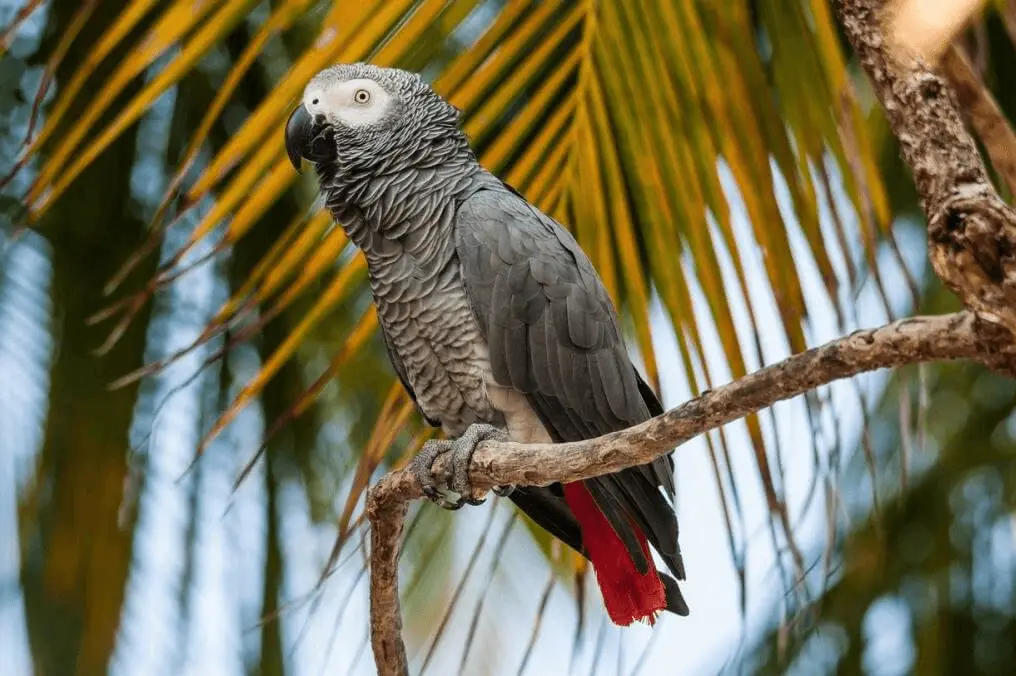
Healthy Signs of an African Grey Parrot
Parrot African Grey life span:
She is 50 to 80 years old
African Grey weight:
It varies between 450 to 600 gr.
I. Its size:
It varies from 33 to 36 cm.
Physical description:
Stumpy parrot plumage while gray gradient with the exception of the bright red tail. This ash appearance is not identical to all parts of the body.
From elegant scales on the head and neck, the plumage darkens on the wings and back to turn pale gray in the central region.
The forehead, the sides of the head, and the lores (= area between the eye and the base of the beak) is an area of white skin, devoid of feathers that forms a mask.
The feathers of the tail are vermilion red.
The beak is shiny black, very massive in appearance.
The iris is completely black in the young, while it is more and more clear with age and becomes orange-yellow as soon as it exceeds 10 to 12 years.
The legs are gray.
The wings are powerful that’s what allows it to fly well.
This bird produces a fine powder to maintain its plumage. A well-powdered bird is a sign of good health.
The absence of this powder may indicate a physiological problem.
K. Sexual dimorphism:
These birds do not show sexual dimorphism.
The way to sex them remains endoscopy or DNA analysis.
Mutations African Grey :
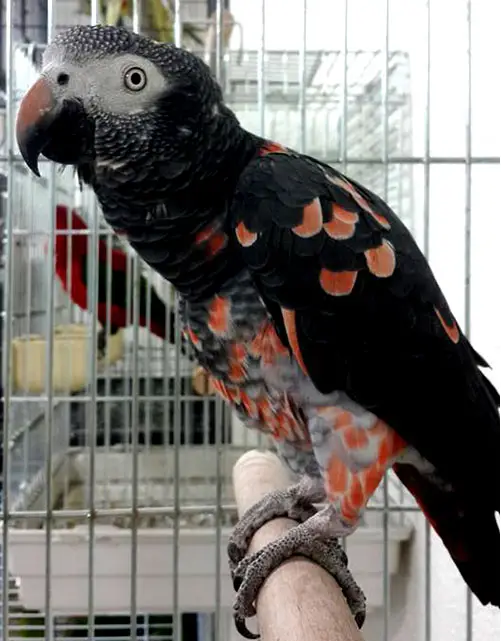
Healthy Signs of an African Grey Parrot
There are some changes, but they are still rare and very expensive to buy.
Red Gray, White-tailed Gray, and Black-tailed Gray can be found.
These mutations are not present as pets.
There is sometimes a grey factor red.
Mr. His behavior:
The gray of Gabon is a bird of excellent company, very affectionate and very endearing.
He is considered intelligent, which makes them successful.
Indeed, its intelligence is comparable to that of a child from 5 to 6 years old and their emotivity to that of a child of 3 years.
It is one of the highest parrots in captivity and most popular mainly because of its calm temperament, intelligence, remarkable ability to reproduce perfectly the sounds, the human voice, and especially ….. to speak to communicate.
He is also appreciated for his great sensitivity and his incredible empathy with humans. He feels our most recent emotions are reflected in his behaviors.
African gray Parrot is more thoughtful, suspicious, and therefore more fearful than

